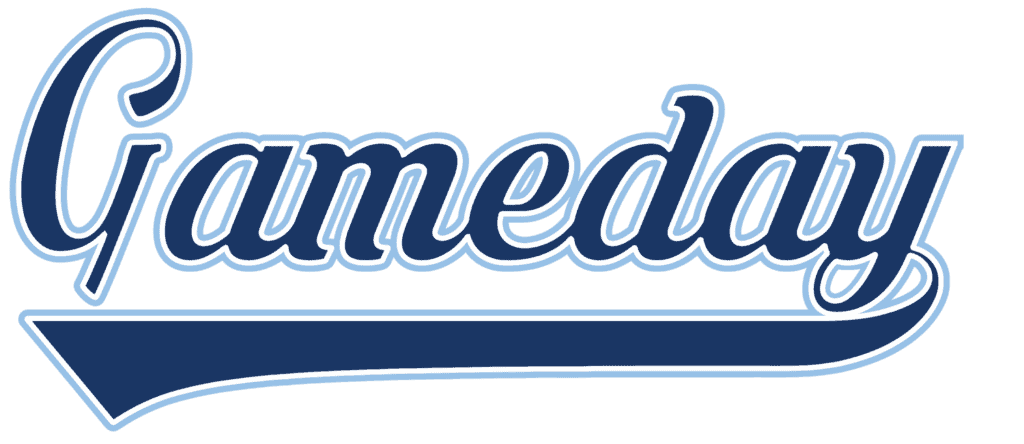There’s sometimes a misperception that the lesser skilled players are sent to the outfield. Whereas this may be true at the younger age levels, as players get older the outfield positions are vital to a team’s success. The centerfielder along with the middle infielders and pitcher and catcher are the most highly recruited positions.
Being a successful outfielder requires a combination of physical skills and mental focus. In this blog, we will discuss several key factors that can help outfielders improve their performance on the field.
First and foremost, it is important for outfielders to have good speed and agility. This will allow them to cover more ground and make it easier to chase down fly balls. Outfielders should work on their footwork and quickness by doing drills such as sprints, agility ladder exercises, and cone drills.
Another important factor for outfielders is their throwing arm. Outfielders need to have a strong and accurate arm in order to make accurate throws to the infield. To improve arm strength, outfielders should practice throwing drills such as long toss and throwing to a target. They should also work on improving their mechanics, such as keeping their elbow up and following through with their throws.
In addition to physical skills, it is also important for outfielders to have good instincts and positioning on the field. This will allow them to anticipate where the ball is going to be hit and get to the right spot on the field to make the catch. Outfielders should practice reading the batter, paying attention to their stance, and studying the way they swing the bat.
Outfielders should also work on their mental focus and ability to stay calm under pressure. In order to make the catch, outfielders need to be able to keep their eye on the ball and not let distractions like the crowd or the runner on base affect their performance. Sometimes it gets boring in the outfield which is why they should also practice visualization techniques, such as imagining themselves making the catch in their minds, in order to prepare for game-time situations.
Here are some good outfield drills we work on at Gameday:
-
Fly ball drills: This drill involves hitting fly balls to the outfielder, who then has to chase them down and make the catch. This helps to improve the outfielder’s speed, agility, and ability to track the ball in the air.
-
Cut-off and relay drills: This drill helps to improve the outfielder’s throwing accuracy and ability to make quick and accurate throws to the infield. Outfielders should practice throwing to different bases and working on their footwork and mechanics.
-
Rundown drills: This drill helps to improve the outfielder’s ability to chase down runners and make quick and accurate throws to the infield. Outfielders should practice tagging the runner and making accurate throws to the correct base.
-
Fungo hitting: This is a drill where the coach hits the ball to the outfielder who has to make the catch. This drill helps to improve the outfielder’s ability to track the ball and make the catch.
-
Base running drills: This drill helps to improve the outfielder’s ability to take good routes to the ball and to make accurate throws. Outfielders should practice reading the ball off the bat, and working on their footwork, angles, and positioning.
-
Batting practice: This drill can help to improve the outfielder’s hitting ability, which is important because they are expected to contribute offensively. Outfielders should practice hitting off of live pitches and working on their swing mechanics.
-
Pregame routine: Outfielders should also have a pregame routine to get them mentally prepared for the game. This may include visualization, goal setting, and positive self-talk.
Sometimes there is some confusion as to the role of each outfield position and the type of player most suited for each outfield position. Each of the outfield positions has specific responsibilities and requires a unique set of skills.
Left field is considered the least demanding of the three outfield positions. Left fielders generally have less ground to cover and are not required to make as many difficult catches as center fielders and right fielders. They are also typically not required to have as strong of an arm as the other positions. However, left fielders are still expected to make routine catches and have a good arm to make accurate throws to the infield.
Center field is considered the most demanding of the three outfield positions. Center fielders are responsible for covering the most ground and are expected to make the most difficult catches. They are also expected to have a strong arm to make accurate throws to the infield. Center fielders are considered the captain of the outfield, they have to have good instincts and positioning, they need to be able to read the ball off the bat and take the proper routes to make the catch. They also need to have good speed and agility to cover more ground and make it easier to chase down fly balls.
Right field is considered to be a combination of the other two positions. Right fielders are expected to have a strong arm to make accurate throws to the infield and are also expected to make routine catches. However, they do not typically have as much ground to cover as center fielders and are not required to make as many difficult catches as left fielders.
Oftentimes more focus in outfield practice Is catching fly balls. There should certainly be this focus which includes working on proper footwork, angles to the ball, running to the anticipated spot and catching mechanics. At Gameday we spend a lot of time working on the fielding work of the outfielder.
Fielding a ground ball as an outfielder involves a series of steps that include positioning, footwork, and technique. Here are some tips on how an outfielder should field a ground ball:
-
Positioning: The first step in fielding a ground ball is to get into the proper position. Outfielders should position themselves in front of where they expect the ball to be hit. They should also be aware of the base runner and be ready to make a quick throw if necessary.
-
Footwork: Outfielders should use good footwork to get to the ball quickly. This includes taking small, quick steps and using a crossover step to change direction if necessary.
-
Technique: To field a ground ball, outfielders should use an athletic stance, bend their knees, and keep their glove down near the ground. They should also keep their eyes on the ball at all times and make sure to field the ball out in front of their body.
-
Glove work: As the ball is coming to the outfielder, they should open the glove, keeping their fingers pointing down and the thumb pointing up, this way the ball will fall into the pocket of the glove.
-
Throwing: Once the outfielder has the ball in their glove, they should quickly transfer the ball to their throwing hand and make a strong, accurate throw to the appropriate base.
-
Practice: Fielding ground balls is a skill that requires practice and repetition. Outfielders should work on this skill regularly in order to improve their technique and develop muscle memory.
How can we help your outfielder? Contact info@road2gameday.com


